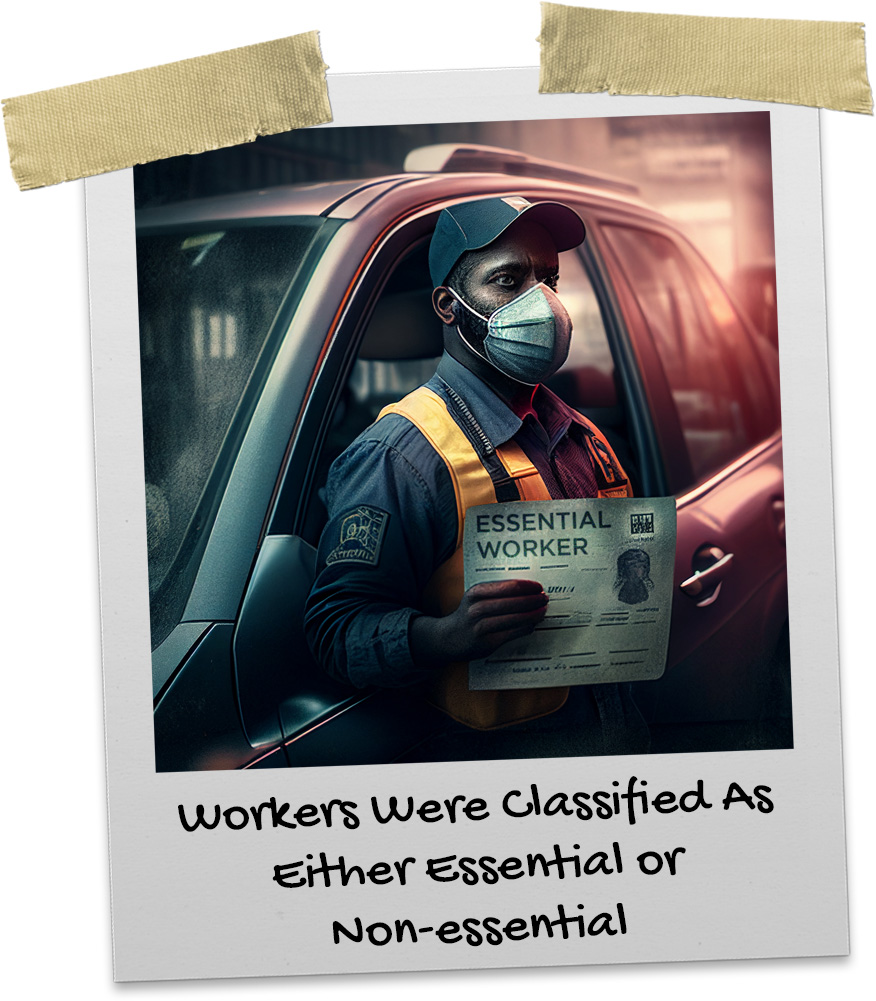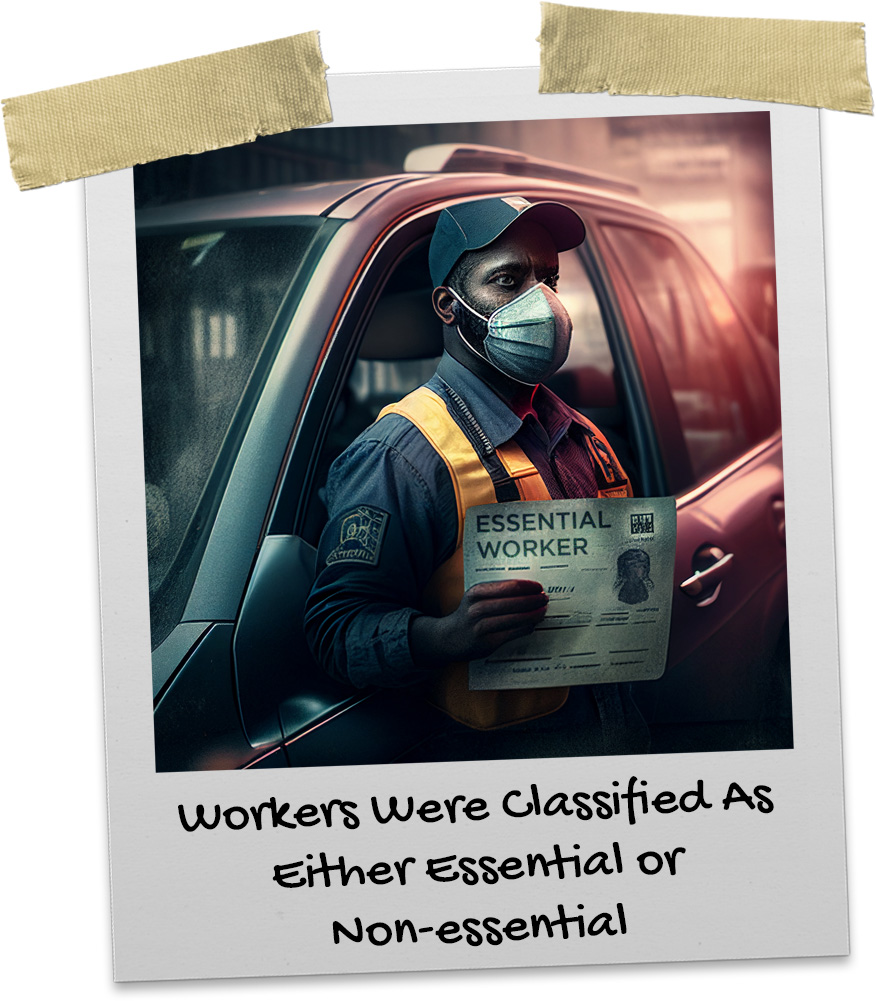Workers Were Classified As Either Essential or Non-essential


As governments around the world imposed lockdowns and restrictions on travel and activity, a distinction began to emerge between "essential" and "non-essential" workers.
Essential workers, as defined by the government, were those who provided vital services and were therefore allowed to continue working during the lockdown. These included healthcare workers, first responders, grocery store employees, and others who were deemed necessary for the maintenance of society.
Non-essential workers, on the other hand, were those whose jobs were not considered essential and were therefore required to stay home during the lockdown. These were more likely to be people who worked in offices, and blue collars workers in industries deemed less essential for our society.
For essential workers, the COVID-19 pandemic brought with it a host of challenges. These workers were often required to work long hours under difficult and stressful conditions, and they faced the risk of exposure to the virus daily.
To help essential workers navigate the restrictions and continue to do their jobs, many governments introduced special measures such as driving permits. These permits, which were often issued by local authorities, allowed essential workers to travel during the lockdown.
Some non-essential workers were furloughed or laid off, and they faced financial uncertainty and the possibility of long-term unemployment. Some also struggled with the isolation and boredom of being confined to their homes for long periods of time.
While the challenges faced by these two groups may be different, they were both facing unprecedented challenges because of the COVID-19 pandemic. Both essential workers risking their health to keep society running and non-essential workers trying to navigate financial and personal challenges during the lockdown, struggled to keep some normalcy in their lives.



